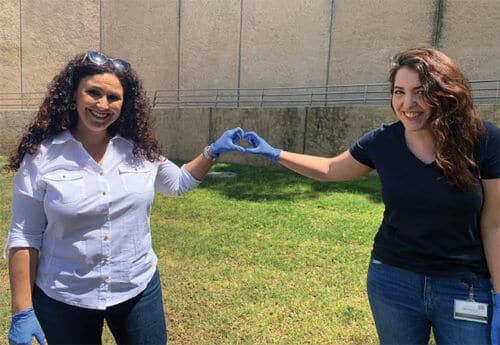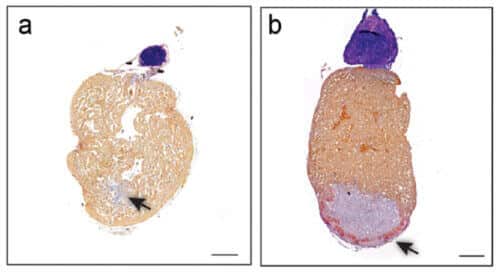Weizmann Institute of Science scientists have shown that the lymphatic system plays a key role in the rehabilitation of the heart of zebrafish after injury. These findings may help in the development of new ways to restore the heart in humans and grow organs for transplantation

When the heart is recovering from an injury, for example after a heart attack, the flow of blood through its veins is essential to the healing process. Now it turns out that a parallel system of vessels, in which the colorless liquid called lymph flows, is just as essential for the rehabilitation of the heart. This conclusion emerges from a new study by Weizmann Institute of Science scientists that was published recently. The scientists showed that without the network of lymphatic vessels, the heart of zebrafish does not recover - even when the blood flow in its veins is continuous. The scientists identified two types of lymphatic vessels in the hearts of the fish, each of which is formed by a different mechanism and performs different functions. These findings may help in the development of new ways to restore the heart in humans and grow organs for transplantation.
The lymphatic system in the body is used to transport the cells of the immune system, to drain fluids and to perform other vital functions that vary from organ to organ. Prof. Karina Yaniv from the Department of Biological Control and her research group wanted to find out what roles this system plays in the heart - especially after a cardiac injury. Zebrafish are incredibly well-suited to studying this question because, unlike mammals, they have an amazing ability to regenerate the heart: about two months after an injury to their heart muscle tissue, up to a third of the tissue can regrow without leaving a scar. On the other hand, after a heart attack in mammals, the muscle tissue does not regenerate and a scar remains in the damaged area.
In fact, the scientists discovered that not only do these lymph cells encourage the regrowth of the heart muscle - without them tissue regeneration does not occur at all: when they engineered zebrafish without lymphatic vessels, it was discovered that their hearts do not regenerate after injury, even though their vascular system was completely normal."

In a previous study, Prof. Yaniv and her colleagues showed that in zebrafish embryos, lymphatic ducts are formed by two separate mechanisms: growth from existing vessels and formation "out of nowhere" from the differentiation of progenitor cells called angioblasts. In the new study, the scientists showed that these two mechanisms also exist in adult zebrafish and that each type of vessel has unique genetic markers and they respond to separate molecular signals. Moreover, the scientists discovered that both types of vessels are also found in mouse hearts - a fact that indicates that the two different formation mechanisms have been preserved during evolution.
Later, the scientists set out to investigate whether one of the two types of lymphatic vessels, or perhaps both together, play a role in heart regrowth. When they injured the hearts of the zebrafish, they discovered in the regenerating area only one type of lymphatic vessels - those formed from single progenitor cells. Later these new cells merged into vessels and connected to larger lymphatic vessels of the second type, but retained their distinct properties. In other words, the scientists discovered that although the two types of vessels perform different functions in the heart - only the type created "out of nowhere" contributes to the regeneration of heart muscle tissue.
In fact, the scientists discovered that not only do these lymph cells encourage heart muscle regrowth - without them tissue regeneration does not occur at all: when they engineered zebrafish without lymphatic vessels, it was discovered that their hearts do not regenerate after injury, even though their vascular system was completely normal.
"We showed that the lymphatic system plays a key role in the rehabilitation of the heart of zebrafish," says Prof. Yaniv. "If we understand this role better, we may be able to learn what fish 'know' about heart regeneration, which mammals do not know - and we can use this knowledge to heal human hearts."
A more detailed understanding of the role of the lymphatic system in the heart may help in the development of new ways to prevent scars that form after a heart attack or after other injuries to the heart muscle. In addition, knowing exactly how the lymphatic system contributes to the growth of the heart muscle will perhaps help in the future to grow heart tissue under laboratory conditions for transplants.
Dr. Dana Gantz, Gal Perlmutter, Dr. Jonathan Samo, Hila Raviv and Naga Moshe from the Department of Biological Control participated in the study; Brian Ratfrey and Prof. Christy Red-Horse from Stanford University; Dr. Ruben Marin-Huez, Prof. Ryuta Matsuoka and Prof. Didier Steinier from the Max Planck Institute for Heart and Lung Research in Bad Nauheim, Germany; Dr. Rabbi Kara and Prof. Kent Foss from Duke University; and Dr. Yosef Addi and Ofra Golani from the Department of Life Sciences Research Infrastructures of the Weizmann Institute of Science.
In mammals, the heart is made up of two atria and two chambers, while in zebrafish - from one chamber and one atrium. However, 84% of the genes involved in disease states in humans have corresponding genes in zebrafish.

2 תגובות
A Nobel Prize maybe...
The results of the study are very interesting and important,
How long does it take to achieve proven results in mammals?
Could this also be true for other tissues in the body?
Will it be possible to restore and rebuild tissue in the brain, for example, after surgery to remove a cancerous tumor, and cause completely healthy tissue to grow in its place.